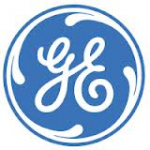
Goldman Sachs, General Electric and the World Resources Institute form the Aqueduct Alliance for fun and profit.
from the Watershed Sentinel
Investment banker Goldman Sachs has famously been described by the Rolling Stone's business writer Matt Taibbi (July 2009) as "a great vampire squid wrapped around the face of humanity, relentlessly jamming its blood funnel into anything that smells like money."
So it's a good idea to take notice whenever that Vampire Squid moves its blood funnel towards something. Having profited handsomely from the Wall Street bailouts, the Squid has smelled money in a new direction: water privatization.
In January 2010, Goldman Sachs, General Electric, and the World Resources Institute (WRI), a Washington-based think tank, together launched a water "initiative" to develop an index measuring water-related risks facing companies and their investors. As their news release put it, "In many regions around the world, water scarcity from climate change and pollution is starting to impact a company's performance, yet few analysts account for water-related risks."
Their new water index would "draw on publicly available data regarding physical scarcity and water quality and overlay factors including the regulatory regime and social and reputational issues" in various regions of the world. In other words, their risk-index might more accurately be called an "opportunity-index" for water-investors.
Goldman Sachs' partner General Electric has long smelled money from that sector. According to Canada's water expert Maude Barlow,
“The biggest water company of all is General Electric.”
The Aqueduct Alliance
By August 2011, Goldman Sachs, General Electric, and WRI had not only found a name for their partnership – the Aqueduct Alliance – but they had also developed their index into a water database and mapping tool, which can include the amount of infrastructure investment taking place in a given region.
Moreover, they had put an "environmental" spin on the project, claiming that it will help corporations, governments and stakeholders become more aware of their "water footprint" and thus make more "sustainable" decisions.
As well, by August 2011, Goldman Sachs, General Electric and WRI had invited into the Alliance some new corporate partners (or Vampire Squids, if you prefer): Coca-Cola, Talisman Energy, Dow Chemical, United Technologies, and Bloomberg. The WRI's Kirsty Jenkinson told the Financial Times (August 16), "Companies see the need to get better visibility about water if they are going to have to access it for their business." With the new Aqueduct Alliance water database, "they can see if they are at risk of not getting the water they need, or coming into conflict with other users of that water."
Presumably, the potential for "conflict" is what attracted United Technologies to join the Aqueduct Alliance. United Technologies is the world's tenth largest arms-producing company, with arms sales of $11.1 billion in 2009.
Coca-Cola has handed over to the Alliance its own proprietary data on freshwater availability worldwide — data collected over years of research for its water-bottling enterprises. "Water is the lifeblood of our business," Coca-Cola spokesman Joe Rozza told the Financial Times. Coca-Cola's Canadian director, J Trevor Eyton, is a director of Brookfield Asset Management Inc, which is heavily involved in BC power, energy, and logging issues.
Calgary-based Talisman Energy spokesman Sandy Stash told Marketwire (August 19), "We are very excited to have been asked to become the oil and gas sector sponsor for the Aqueduct Alliance… Talisman aspires to a water management strategy that defines best practices for water withdrawal, reuse, disposal and conservation in our North American shale gas operations." Just three weeks earlier, the BC Liberal government had awarded Talisman Energy a licence to divert up to 10,000 cubic metres of water per day from the Williston reservoir for the next 20 years. The Williston reservoir is BC's main hydroelectric reservoir, serving the WAC Bennett Dam and Shrum Generating Station on the Peace River.
The Aqueduct Alliance intends to generate databases and water-maps with "an unprecedented level of detail and resolution," including advanced hydrological data and "geographically specific indicators that capture the social, economic, and governance factors that affect companies and economies." The databases will include up-to-date news coverage on water issues in a given region.
By September 2011, the Aqueduct Alliance had developed a prototype database/map covering the Yellow River Basin in Northern China. In January 2012, the Aqueduct Alliance intends to release four additional database/maps on river basins of "high priority," including the Colorado River in the USA, the Orange-Sengu River in Africa, the Yangtze River in China, and the Murray Darling River in Australia. Fifteen more regions across the world will then be analyzed.
© Copyright 2013 SGNews Contributor, All rights Reserved. Written For: StraightGoods.ca
Sorry, the comment form is closed at this time.